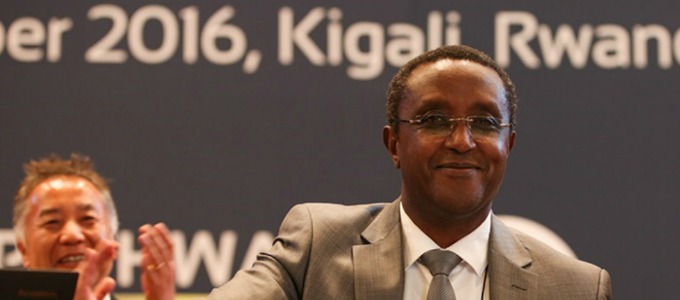Reducing emissions of hydrofluorocarbons (HFCs) under the Kigali Amendment can prevent up to 0.5°C of global warming, while continuing to protect the ozone layer. Similarly, HFCs consumption to be reduced in 2019 in developed countries and frozen in 2024 and 2028 in developing countries

Nearly 200 countries struck a landmark deal on Saturday in Kigali, Rwanda to reduce the emissions of powerful greenhouse gases, hydrofluorocarbons (HFCs), in a move that could prevent up to 0.5 degrees Celsius of global warming by the end of this century.
The amendment to the Montreal Protocol on Substances that Deplete the Ozone Layer endorsed in the Rwandan capital city is believed to be the single largest contribution the world has made towards keeping the global temperature rise “well below” 2 degrees Celsius, a target agreed at the Paris climate conference last year.
“Last year in Paris, we promised to keep the world safe from the worst effects of climate change. Today, we are following through on that promise,” said United Nations Environment Programme (UNEP) chief, Erik Solheim.
“This is about much more than the ozone layer and HFCs. It is a clear statement by all world leaders that the green transformation started in Paris is irreversible and unstoppable. It shows the best investments are those in clean, efficient technologies.”
Commonly used in refrigeration and air conditioning as substitutes for ozone-depleting substances, HFCs are currently the world’s fastest growing greenhouse gases, their emissions increasing by up to 10 per cent each year. They are also one of the most powerful, trapping thousands of times more heat in the Earth’s atmosphere than carbon dioxide (CO2).
“The faster we act, the lower the financial costs will be, and the lighter the environmental burden on our children,” said President of Rwanda, Paul Kagame.
“That begins with a clear signal that change is coming and it is coming soon. In due course, new innovations and products will allow us to phase out HFCs even faster, and at lower cost.”
The rapid growth of HFCs in recent years has been driven by a growing demand for cooling, particularly in developing countries with a fast-expanding middle class and hot climates. The Kigali amendment provides for exemptions for countries with high ambient temperatures to phase down HFCs at a slower pace.
“It is not often you get a chance to have a 0.5-degree centigrade reduction by taking one single step together as countries – each doing different things perhaps at different times, but getting the job done,” said US Secretary of State John Kerry.
“If we continue to remember the high stakes for every country on Earth, the global transition to a clean energy economy is going to accelerate.”
Phase down schedule
Following seven years of negotiations, the 197 Montreal Protocol parties reached a compromise, under which developed countries will start to phase down HFCs by 2019. Developing countries will follow with a freeze of HFCs consumption levels in 2024, with some countries freezing consumption in 2028.
By the late 2040s, all countries are expected to consume no more than 15-20 per cent of their respective baselines.
Financing and alternatives to HFCs
Countries also agreed to provide adequate financing for HFCs reduction, the cost of which is estimated at billions of dollars globally. The exact amount of additional funding will be agreed at the next Meeting of the Parties in Montreal, in 2017. Grants for research and development of affordable alternatives to hydrofluorocarbons will be the most immediate priority.
Alternatives to HFCs currently being explored include substances that do not deplete the ozone layer and have a smaller impact on the climate, such as ammonia or carbon dioxide. Super-efficient, cost effective cooling technologies are also being developed, which can help protect the climate both through reducing HFCs emissions and by using less energy.
The Kigali Amendment comes only days after two other climate action milestones: sealing the international deal to curb emissions from aviation and achieving the critical mass of ratifications for the Paris climate accord to enter into force.
